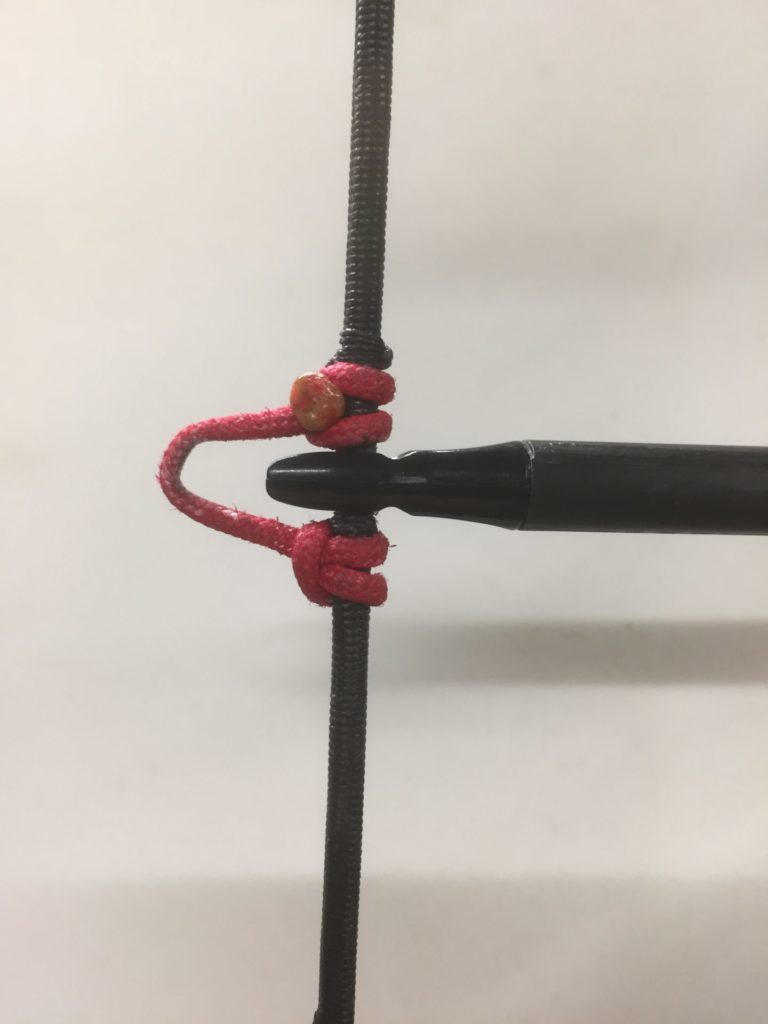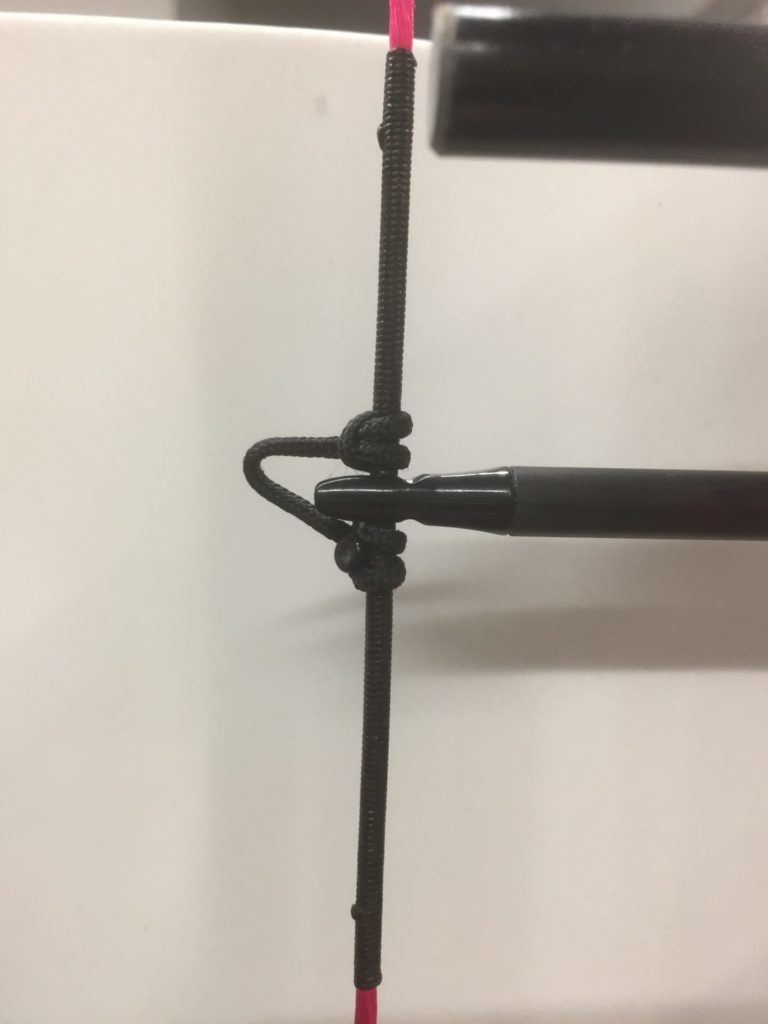Working in a bow shop, we see a lot of improper nock points and D loops. Everything from D loops that are way too long, to kisser buttons used for nocking an arrow on, metal nocks inside your D loop, even two metal nocks inside the D loop, metal nocks above D loops, metal nocks below the D loop. We have seen it all. Usually these concoctions come from inexperienced archers.
Advertisement
The best set-up is what you see on the bows belonging to professionals; they shoot those bows for a living. Our staff travels to Vegas each year for the World Championships and I attend shows in the States to converse with the pros and the manufacturers about the latest and greatest products and innovations.
I spend a lot of time not only shooting bows at these trade shows and seeing the latest accessories, but also asking the gurus of the sport and manufacturers a lot about their set-ups and even paying attention to how they attach their D loops. Attaching your release directly to the string is now a thing of the past.
Advertisement

The D loop has not only saved damaging the string and centre serving, but it also has reduced the twisting action that attaching directly to the string had caused. It’s also less cost to replace a D loop once in a while than the whole string or serving.
Placing a metal nock inside the D loop and above the arrow applies downward pressure on the arrow when you draw the bow, caused by the angle of the string. Doing the opposite and placing a metal nock under the arrow inside the D loop causes upward pressure under the arrow on draw, also caused by the angle of the string. Placing a metal nock above and below the arrow is also a no-no. Tying a few knots of serving above or below your D loop to see if your D loop is moving on you isn’t all that bad, but there is more likelihood in your whole string stretching than your D loop to move, especially on single-cam bows when the strings are very long, as they stretch way more than the string on a double or hybrid cam bow because they are shorter.
Advertisement
Regular-sized D loops that start at about four to four-and-a-quarter inches long before it’s tied is about the best. Some D loop materials stretch more than others. Some releases have bigger jaws than others, so some D loops may need to be slightly longer than others. Do not use longer D loops to adjust draw length – we have seen that before, too. For the majority of hunters who have a target the size of a pie plate, four inches to four-and-a-quarter inches for the D loop is all you need on your hunting set-up.
Now on a target bow set-up, a very common trick used by a lot of pros is to tie a few knots under the arrow with some serving (not a metal knock) within the D loop and what this does is pushes the arrow to sit a little higher in the D loop to make the D loop sit more directly in line with the arrow. If you look at my picture, you will see a regular D loop without the knots under the arrow and how when you draw your bow regularly it causes the D loop to change its shape and the release ends up above the center point of the arrow.

Then when you look at my picture of a D loop with the knots under the arrow, you see how the release and the centre of the arrow line up better with each other. Now when you are a target shooter whose paycheque is dependent on every one-eighths-of-an-inch meaning something or if you are trying to shoot your best scores, this may mean something to you. For the rest of us mortals, the distance misjudged on a shot at a deer in the field or the wind, that day or your average shooting abilities, this is all not necessary.
I do this on my two target bows, but do not bother on my hunting bow set-up, just because one sport requires me to hit a dime while the other requires me to hit a deer.
Hope this helps you in deciding how you want your bow’s D loop set-up to look like.